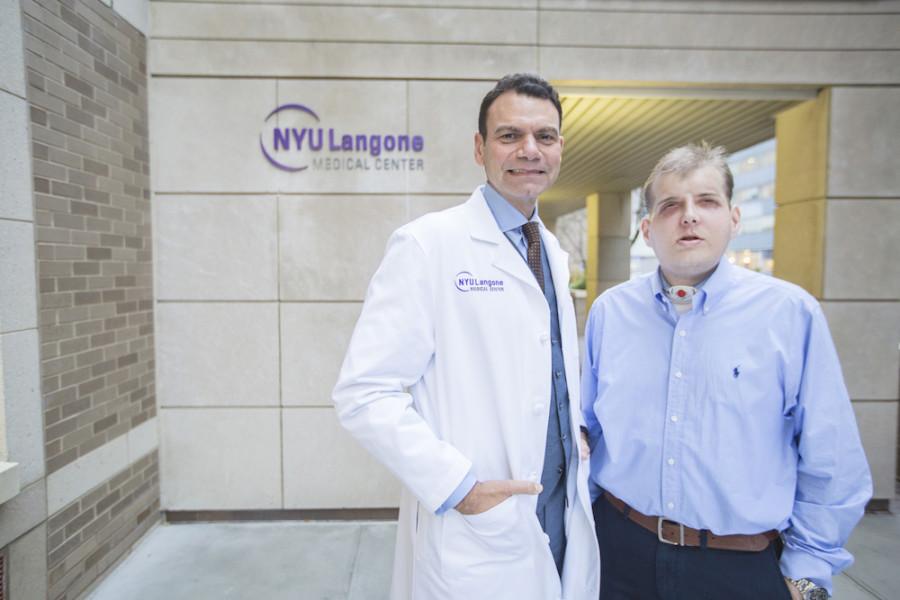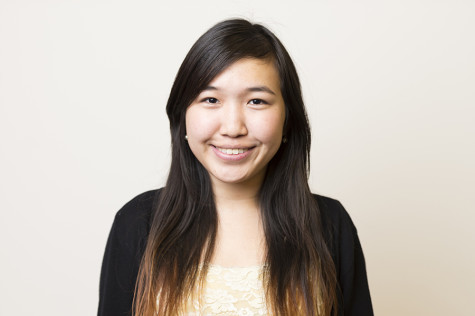NYU Langone declares most extensive facial transplant in history a success
Dr. Eduardo D. Rodriguez, pictured with his face transplant patient Patrick Hardison at NYU Langone on November 12, 2015
November 19, 2015
Patrick Hardison was a volunteer first responder the day a burning house collapsed on top of him and destroyed his facial tissue. But on Monday, 14 years after that event, NYU Langone declared that Hardison has become the successful recipient of the most extensive facial transplant to date.
Because of the fire, Hardison completely lost his ears, lips, eyelids, hair and the use of most of his nose. The third-degree burns were so intense that doctors said there was no normal tissue left on his face.
But thanks to the donation of a man named David Rodebaugh who died in a biking accident at age 26, Hardison was able to receive the world’s most extensive face transplant. NYU Langone successfully performed this revolutionary operation on Aug. 14.
The operation included the transplanting of Rodebaugh’s eyelids and the muscles that control blinking — a first in the field of face transplants — allowing Hardison to continue to see. After about three months of immunosuppressants and seeing no rejection from his body, NYU Langone officially announced the success of the procedure on Monday.
Alexes Hazen, MD, associate professor at NYU Langone’s Hansjörg Wyss Department of Plastic Surgery, was a part of the team that performed the operation for Hardison and said he is thrilled by what they accomplished.
“I’m incredibly proud to be a part of a more than year long process that culminated in this incredible and historic face transplant,” Hazen said. “Through the bravery of our patient and the generosity of the donor and the donor’s family, the leadership of Eduardo D. Rodriguez, MD, DDS, and the hard work and dedication of our face transplant team — we have been able to change what is possible for patients.”
Hazen added that the implications of the surgery’s success could prove revolutionary for patients like Hardinson, who underwent 70 surgeries before the face transplant.
“The success of this procedure means that in the future when a patient has extensive injuries, we may consider a face transplant sooner — before countless other operations have been performed that do not yield excellent results,” Hazen said.
Eduardo D. Rodriguez, a Helen L. Kimmel professor of Reconstructive Plastic Surgery, led the 26-hour long surgery and said this momentous success could mean a brighter future for war veterans and civilians alike.
“We started this war fighter protection program to care for our wounded veterans and first responders,” Rodriguez said. “We are now properly positioned to handle these extreme casualties, which of course will benefit civilians as well. Because we know that facial transplantation is technically possible and successful, there’s no turning back. The tools and outcomes will only improve and come about faster.”
Sheikh Uddin, a sophomore biochemistry major in the College of Arts and Science, said he is impressed at the speed of medical advancements and feels inspired by this story to contribute useful research to the medical community.
“Advances like this make me feel that at some point we can find a way to cure just about anything and maybe even achieve some type of immortality,” Uddin said. “This inspires me to continue doing research in order to help humanity along it’s path to greater achievements and conquests.”
Email Christine Wang at [email protected].



























































































































































